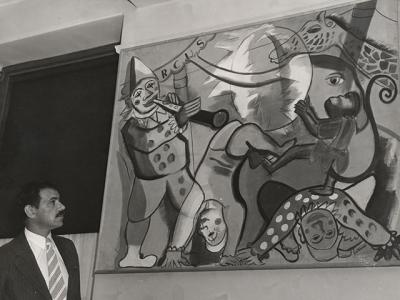Louis Schanker Opens Pollock-Krasner House

Although he was a friend of Jackson Pollock, Lee Krasner, Stuart Davis, Mark Rothko, and Adolph Gottlieb, Louis Schanker, an artist who lived in New York City, East Hampton, and Stanford, Conn., is not as widely known as those colleagues.
The new exhibition at the Pollock-Krasner House and Study Center in Springs, “Louis Schanker: The W.P.A. Years,” sheds light on one of the most productive periods of his 50-year career, when he was a supervisor on both the mural and graphics divisions of the Federal Art Project of the Works Progress Administration, the New Deal agency created to relieve unemployment during the Great Depression.
Schanker was one of several artists, including Davis, who produced a mural for WNYC, New York’s municipal radio station, and later created a mural for the Hall of Medicine and Public Health Building at the New York World’s Fair of 1939.
Although Grace Glueck, a New York Times critic, said his work of the 1930s and 1940s was done “in a semi-abstract mode that was influenced by European modernism,” in 1935 he joined Rothko, Gottlieb, and other artists in a group known as “The 10,” who protested the lack of support for American abstract artists by the Whitney Museum. Ironically, Schanker’s work was included in that museum’s 1936 annual exhibition.
The exhibition features a selection of his woodblock and linoleum block prints, including examples of the blocks themselves and process materials. Studies for his murals at WNYC and the Neponsit Beach Children’s Hospital in Queens will also be on view.
The catalog essay by Greta Berman, an art historian and author of “The Lost Years: Mural Painting in New York City Under the Works Progress Administration’s Federal Art Project, 1935-1943,” focuses on Schanker’s three major themes: music, sports, and the circus. A reception and gallery talk with Ms. Berman will take place on May 27 from 5 to 7 p.m., and the exhibition will continue through July 28. M.S.
